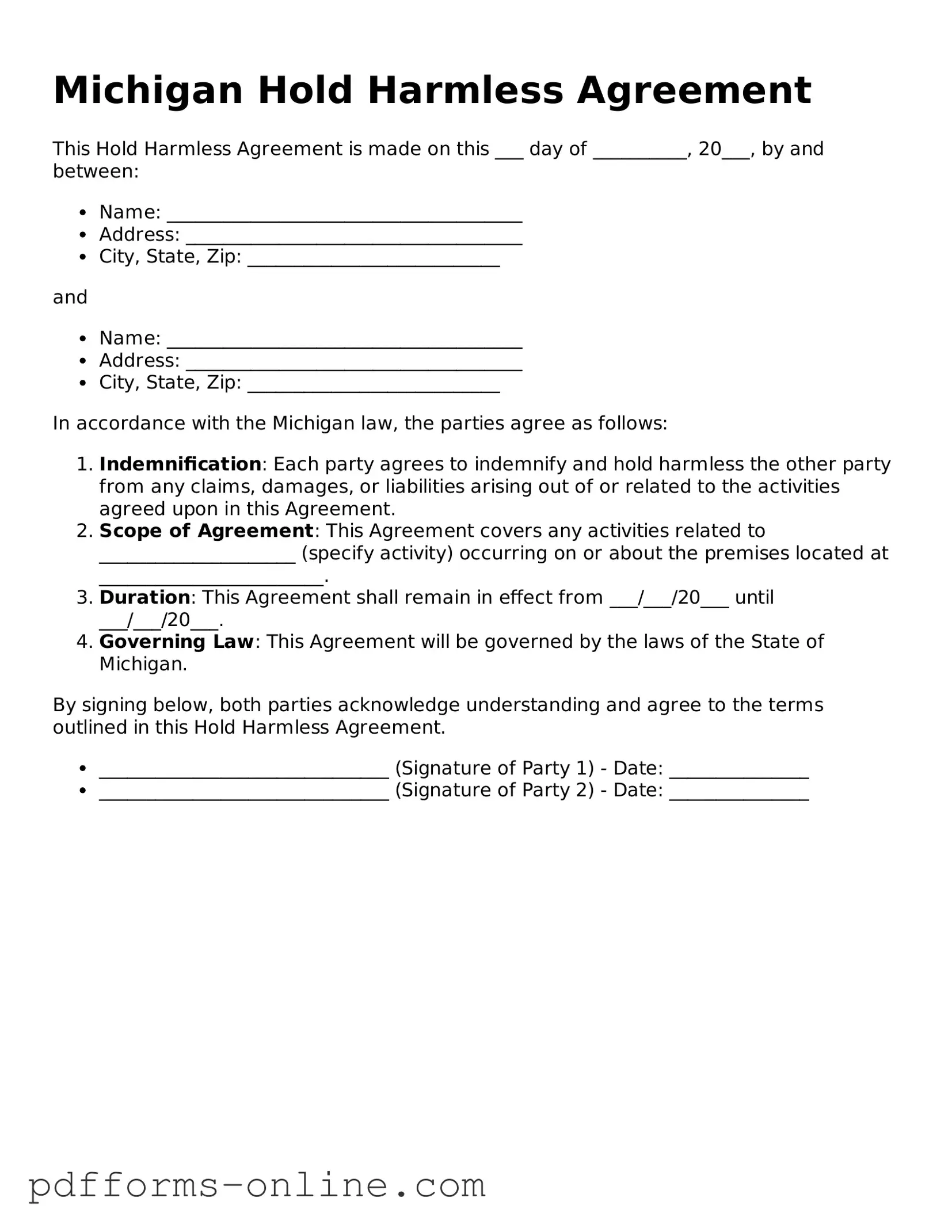The Michigan Hold Harmless Agreement is similar to a Liability Waiver, which is often used in recreational activities and events. A Liability Waiver typically requires participants to acknowledge the risks involved in an activity and agree not to hold the organizer liable for any injuries or damages that may occur. Both documents aim to protect one party from legal claims by requiring the other party to assume responsibility for their own safety and well-being. In essence, both serve to limit liability, but a Hold Harmless Agreement may be broader in scope and can cover various types of risks beyond just those associated with a specific activity.
Another related document is the Indemnity Agreement. This agreement obligates one party to compensate another for any losses or damages incurred. While a Hold Harmless Agreement prevents one party from being held responsible for certain claims, an Indemnity Agreement goes a step further by requiring one party to financially protect the other against those claims. Both agreements are used to manage risk and clarify the responsibilities of the parties involved, but they differ in their focus on liability versus financial compensation.
A Service Agreement also shares similarities with the Hold Harmless Agreement. In a Service Agreement, one party provides services to another, and the terms often include clauses that address liability and indemnification. Like the Hold Harmless Agreement, a Service Agreement may include provisions that protect the service provider from claims arising out of the services rendered. However, a Service Agreement is more comprehensive, detailing the scope of work, payment terms, and specific responsibilities of each party, while the Hold Harmless Agreement focuses primarily on liability issues.
The Rental Agreement is another document that often includes hold harmless provisions. When renting property or equipment, landlords or owners may require tenants or renters to sign an agreement that includes a clause protecting them from liability for injuries or damages that occur on the premises. This is similar to the Hold Harmless Agreement in that it seeks to limit the liability of one party while shifting the responsibility for safety to the other. However, Rental Agreements are typically more extensive, covering terms related to the rental period, payment, and property conditions.
A Release of Liability form is akin to a Hold Harmless Agreement in that both documents are designed to protect one party from legal claims. A Release of Liability is often used in situations where individuals participate in activities that carry inherent risks, such as sports or adventure activities. By signing this form, participants agree to waive their right to sue for injuries sustained during the activity. While both documents serve to limit liability, a Release of Liability is often more focused on the participant's acknowledgment of risk, whereas a Hold Harmless Agreement may cover a broader range of liabilities.
Lastly, the Non-Disclosure Agreement (NDA) can be seen as similar in its protective nature, though it serves a different purpose. An NDA is designed to protect confidential information shared between parties. While it does not directly address liability, it establishes a framework for accountability and responsibility regarding sensitive information. In a way, both documents create a safeguard for one party, ensuring that the other party does not disclose or misuse information or, in the case of the Hold Harmless Agreement, does not pursue legal claims for certain liabilities. The common thread is the desire to protect one party from potential harm, whether that harm is physical, financial, or reputational.
